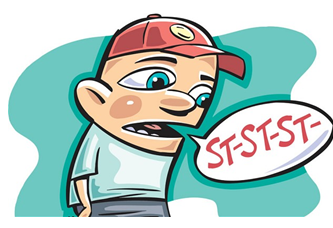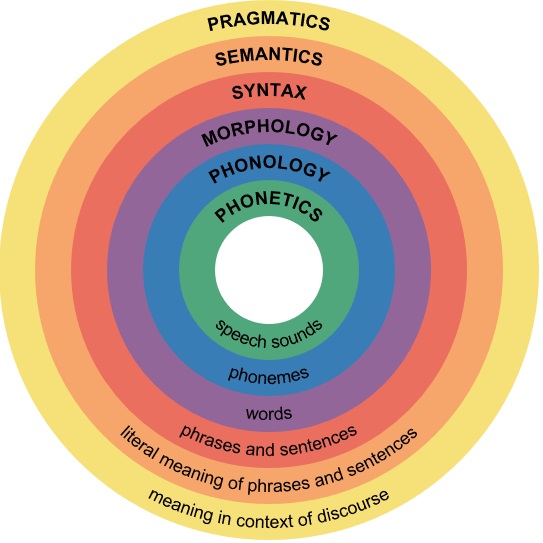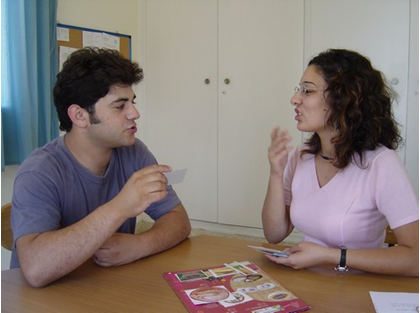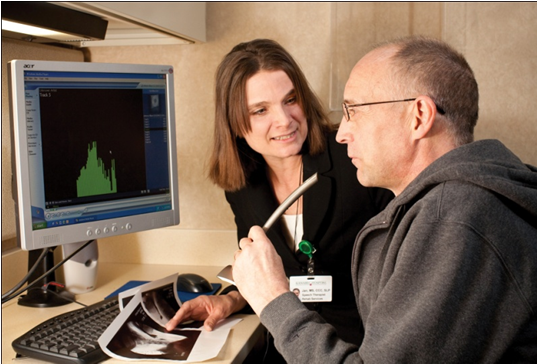
Speech therapy assists people with aspects of speech such as
articulation and apraxia. Language therapy is divided into 2 aspects: Receptive Language and Expressive Language. Receptive language refers to what you understand about what is said to you and expressive language refers to how well you can express your own thoughts and ideas to others.
Stuttering therapy

Stuttering makes it difficult for both children and adults to get words out fluently.
Speech becomes broken and dysfluent with stuttering. On some days, speech may be more fluent than on others. It can also be accompanied by other symptoms such as: avoiding eye contact during a stutter, tapping when trying to get a word out and increased tension in the shoulders, neck and face. There are different types of stuttering: blocks (where the word gets “stuck”), repetitions (r,r,r,r rabbit) and prolongations(r.....abbit). A tailor made therapy plan is made for each person as no one is exactly the same.
Language

Language is the way we communicate.
Some of the different ways we can communicate are through: speech, sign language, pictures etc. Language is rule governed and formed in a structured manner. When break downs occur, many misunderstandings happen as a result. Click here to find out more.
Articulation

Have you ever heard a child say
/wabbit/ instead of /rabbit/ or /tup/ instead of /cup/. The mixing up of sounds in words may result in an articulation disorder. Just as children have milestones for how old they are when they crawl and walk, so too are there milestones for sound development. Certain sounds develop at certain ages and if they haven’t developed by that age, the child may be experiencing a difficulty with their articulation.
Phonology

Phonological processes are used by children
to simplify adult language as they are learning. On average, these processes should disappear by about 7 years of age where their speech becomes much clearer and starts sounding like the adults around them. These errors should be predictable and consistent.
Voice

Your voice is essential for the intelligibility and quality of your speech.
Disorders in this area may result in hoarsness, breathiness, pain and discomfort, hyper or hyponasality as well as pitch breaks and difficulties with resonance. A trained therapist may assist you to regain your voice with various exercises and techniques. People who are particularly at risk of developing difficulties with their voices are singers, teachers and smokers.
Oral Motor

A decrease in the tone / strength of the muscles in the mouth can
result in poor quality and intelligibility of speech as well as difficulties with eating. This loss of tone may be present from birth or be acquired as a result of head trauma or a stroke for example. Speech therapists are trained to assist in regaining or developing their oral musculature.
Apraxia

This is a form of unclear and dysfluent speech
where your brain may struggle to plan and co-ordinate the sequences of movements of your tongue, cheeks, lips and voice in order to speak. Children may be born like this or it can be acquired through trauma such as a stroke. Both children and adults may suffer from apraxia as a result.
Screening

Screening is a quick assessment performed across
a selection of speech and language functions which allows us to determine whether you are possibly experiencing a speech, language delay or disorder. This is particularly useful for schools in which quick detection and prevention may make or break a child’s academic performance. It is also very useful for individuals who have suffered a stroke or head trauma as their speech and language ability my have become impaired.
Assessment

A Speech, Language assessment is a more in depth and specific assessment
of an area of concern or across all areas of speech and language. Here specific difficulties may be determined, for example: a child is struggling to produce the sound /r/ in words but more specifically, only in the middle of words. Or a teacher is struggling with her voice but more specifically with the power of her voice and not the pitch or quality of her voice. This assessment is essential before therapy starts as it pinpoints where the therapist will work, what goals to set and where to start. It also provides the therapist with a good idea of what strengths you have which may assist with therapy.